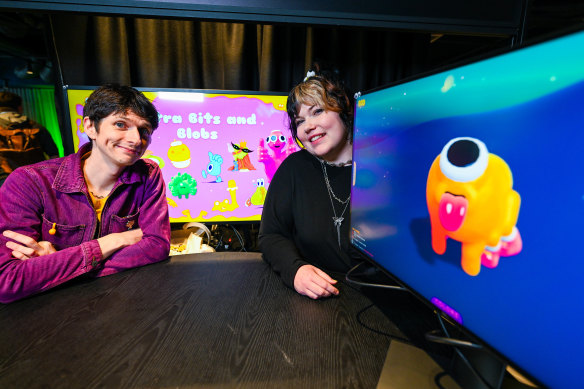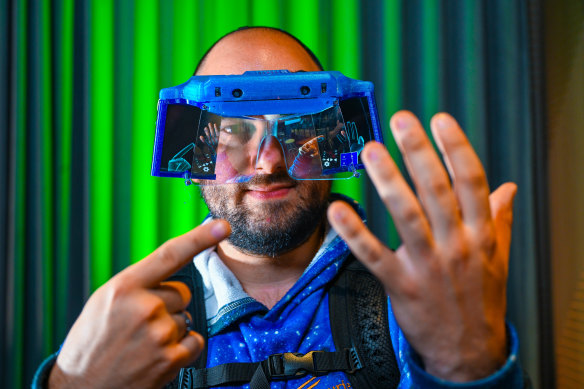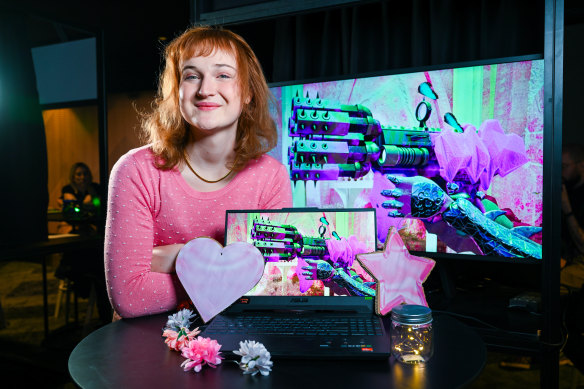Hot pink first-person shooters and other upsides to the turmoil in the gaming industry
By Nell Geraets
Over the past two years, video game developers have been navigating turbulent waters. Despite financial growth in the industry in 2023, which saw global revenue increase by 0.5 per cent year-on-year to $274.3 billion, thousands of developers, programmers, sound designers and artists were laid off around the world. This continued into the new year, with more than 10,000 people let go by June, according to an analysis by gaming and entertainment news site Polygon.
In January, a survey by the Games Developer Conference estimated about one-third of game developers were affected by last year’s layoffs. About 7 per cent of them were let go.
There are several reasons behind the mass redundancies, including inflation and company acquisitions and mergers. However, many developers attribute it to a post-pandemic course correction.
Video game sales soared during the pandemic, as people turned to digital games during lockdowns. Subsequently, investors increased funding to the industry, encouraging game developers to commission more ambitious projects and hire more staff. But once lockdowns ended, sales declined.

Kelsey Gamble (right) and Josh Bradbury (left), developers from Oddlark studio, are taking advantage of the indie games rebirth.Credit: Joe Armao
“Studios have closed everywhere,” says Kelsey Gamble, executive producer of independent game developer Oddlark. “In Australia, the government’s funding [such as the digital games tax offset] has stemmed a lot of the bleeding, but globally, things like inflation are really hurting.”
However, as dire as it seems, it has been a boon for the independent games sector.
“A lot of the people who were laid off have said, ‘now is the time to bite the bullet because nothing is safe right now. I can do something that’s for me, and tell the stories I want to tell’. It’s the silver lining during a really tough time,” Gamble says.
This is apparent at events such as Play Now Melbourne, where local developers pitch projects to international publishers. In its second year, Play Now has significantly increased in scale, says Paul Callaghan, head of games and interactive at VicScreen, which presents the event.
“In the first year, we had about 40 projects, and about 15 platform holders, publishers and investors. We scaled it up this year, jumping to around 55 projects, and 19 publishers, platform owners and investors,” Callaghan says. “Everyone at Play Now is building their own success and is committed to their own creative vision. Their games are experimental and creative, and they take risks in interesting ways.”

Play Now Melbourne sees a wide range of independent game pitches, from consoles to VR.Credit: Joe Armao
It’s this kind of risk-taking that sets the independent games sector apart from AAA games (high-budget projects produced and distributed by large publishers). Callaghan says independent games are more open to risk because they are quicker to create and less confined by commercial targets.
“It’s a different class of risk when making indie games,” he says. “When you’re making a small project, that takes maybe six to nine months, your ability to swing for the fences in a particular direction is greater.”
This appeals to female and gender-diverse developers who’ve found it harder to break into the AAA industry. According to the Australian Bureau of Statistics, just over one-quarter (26.9 per cent) of the 2,225 people employed in digital game development in June 2022 were female.
Astrid Refstrup, who works in developer relations and business development at Wings, an investor in indie games by women and gender-marginalised creators, says there’s a major gender funding gap.
“Women are often told they’re inexperienced, getting in a bit too early, which their male colleagues wouldn’t be told. They would be seen as young go-getters,” Refstrup says. “Women therefore tend to ask for smaller budgets, or excuse themselves during pitches.”

Jane Fiona Kennington co-created Don’t Stop, Girlypop!, a hyper-feminine first-person shooter that subverts the traditionally masculine genre.Credit: Joe Armao
Jane Fiona Kennington, co-founder of Perth-based Funny Fintan Softworks, is benefiting from this indie rebirth. She began developing the hyper-feminine first-person shooter Don’t Stop, Girlypop! in year 10, for gamers who enjoy fast-paced arena-style games but might not feel welcome in the male-dominated genre. Funding from Screen Australia and Screenwest allowed her team to work on the project full-time. Now 19, she is attending events such as Play Now to secure further funding.
“There are obviously a lot of men in this industry,” Kennington says. “Shooter [games] specifically are really masculine-coded.”
The game was designed as a first-person shooter without having to listen to heavy metal. She prefers Y2K pop, so she created something that blended the two mediums.
Chloe Giusti, regional lead at Microsoft’s ID@Xbox, agrees there’s room for growth and originality in genres dominated by male creators and players.
“When you take awesome game-play mechanics that have been proven and tested, and you put different layers on them, you’re going to attract a whole new side of gamers that may not have looked at it otherwise,” she says.
“In times of turbulence in the industry, the silver lining is that there’s a rebirth of the indie movement, and with that, a more diverse pool of people.”
Find out the next TV, streaming series and movies to add to your must-sees. Get The Watchlist delivered every Thursday.